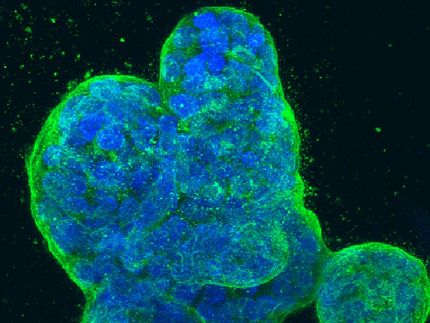Positive Results from Cytogen and Kimmel Cancer Institute Research Collaboration to Study Tumor Suppressor Protein Interactions
Advertisement
Cytogen Corporation, a product-driven, oncology-focused biopharmaceutical company, and researchers at the National Cancer Institute-designated Kimmel Cancer Institute at Thomas Jefferson University announced the publication of positive results from their research collaboration designed to identify novel interactions associated with Wwox, a tumor suppressor protein. Results from the study were recently published in the Proceedings of the National Academy of Sciences of the United States.
Using data derived from Cytogen's in vitro signal transduction pathway discovery platform, the functional association between Wwox and p73 was revealed and subsequently confirmed through a variety of in vivo experiments. In addition to confirming the Wwox-p73 interaction both in vitro and in vivo, the study demonstrated that the interaction results in an increased rate of cell death (apoptosis). Accordingly, genetic mutations that prevent the Wwox- p73 interaction may be important for the development of a variety of cancers.
"Our research collaborations with commercial, governmental, and academic institutions, such as the Kimmel Cancer Institute, are designed to demonstrate the value of existing data derived from Cytogen's high-throughput platform to identify and characterize protein-interactions," said Michael D. Becker, Cytogen's President and Chief Executive Officer. "More importantly, by leveraging the research capabilities of our collaborators, we have been able to validate and advance this novel discovery platform in a mutually beneficial manner without diluting the Company's product-driven business model."
Signaling molecules such as growth factors, receptors, and intracellular proteins communicate with each other through structurally and functionally defined modules and their respective binding partners. The modular and well- defined nature of these interactions makes them ideal drug targets for developing small inhibitory molecules. For example, small molecules that inhibit Src SH2 domain-ligand interactions have already been developed for the treatment of osteoporosis, specifically in the inhibition of osteoclast resorption. However, one of the historical challenges in designing small molecule inhibitors or modulators for these interactions is the fact that these modular domains are highly homologous within each "family," making it difficult to develop a highly specific inhibitor for a particular interaction.
Emphasizing the principal of sequence-specific protein-interactions, Cytogen attempts to overcome these historical challenges through the exact determination of the specificity for each modular interaction by integrating parallel synthesis of peptides, domain expression and high-throughput screening methodology combined with bioinformatics tools. Through its AxCell Biosciences subsidiary, the Company has assembled a proprietary collection of protein-interaction data that includes vital information about signaling modules, including WW, SH3, and PDZ domains that can be used for drug discovery and development. A series of commercial products based on the Company's protein interaction data are currently available through partnerships with Panomics, Inc. and Biomax Solutions, Inc. These products include protein interaction reports, domain arrays for profiling interactions and peptides for functional studies.
"In the present study, we have demonstrated the physical interaction between the recently discovered Wwox and the p53 homolog, p73," said Carlo Croce, M.D., professor and chair of microbiology and immunology at Jefferson Medical College of Thomas Jefferson University and director of the Kimmel Cancer Center and lead author of the publication. "Since the Wwox protein contains two WW domains that are generally known to mediate protein-protein interaction, Cytogen's robust WW domain interaction data allowed us to efficiently reveal a functional cross-talk between p73 and the Wwox tumor suppressor protein. The study results help establish that the Company's high- throughput method to measure protein-interactions compares favorably with other more complex techniques and further validates this method of elucidating and identifying protein interactions."























































